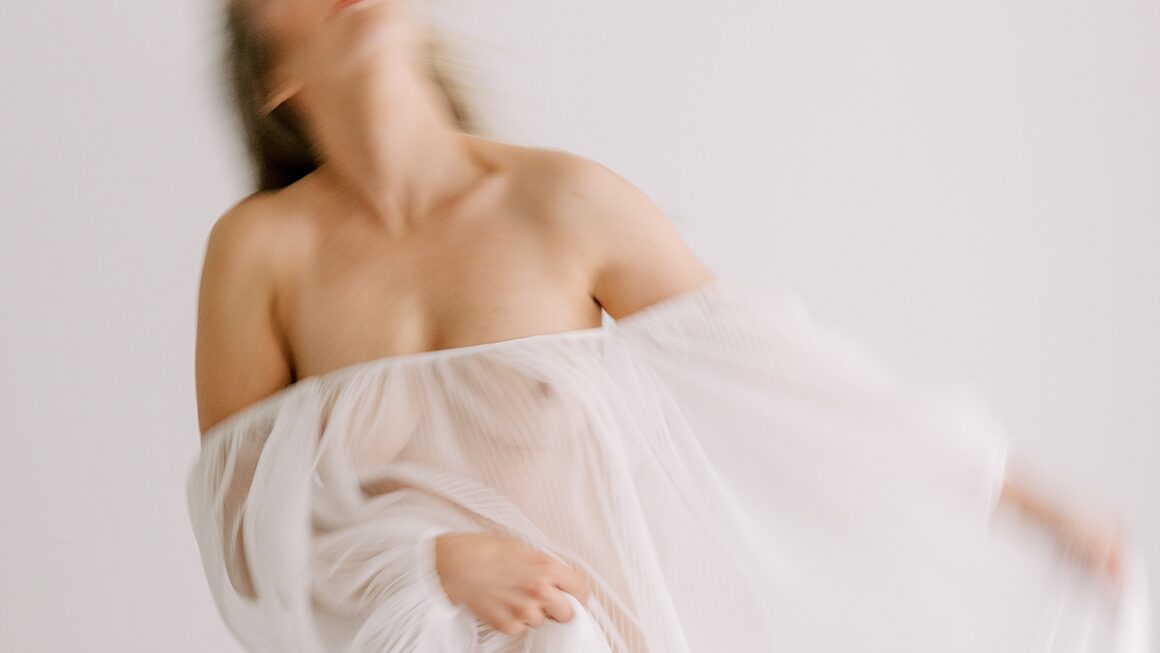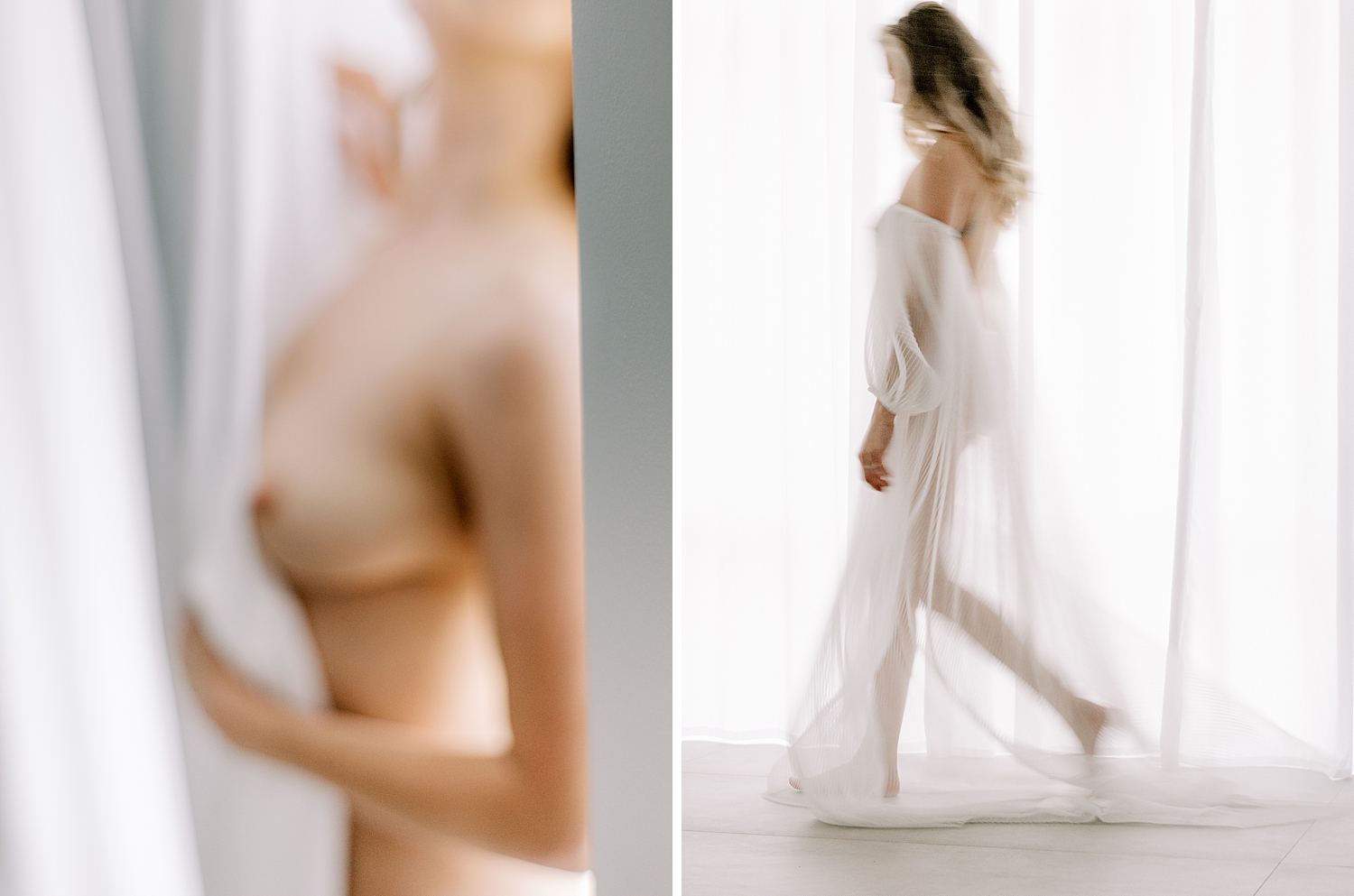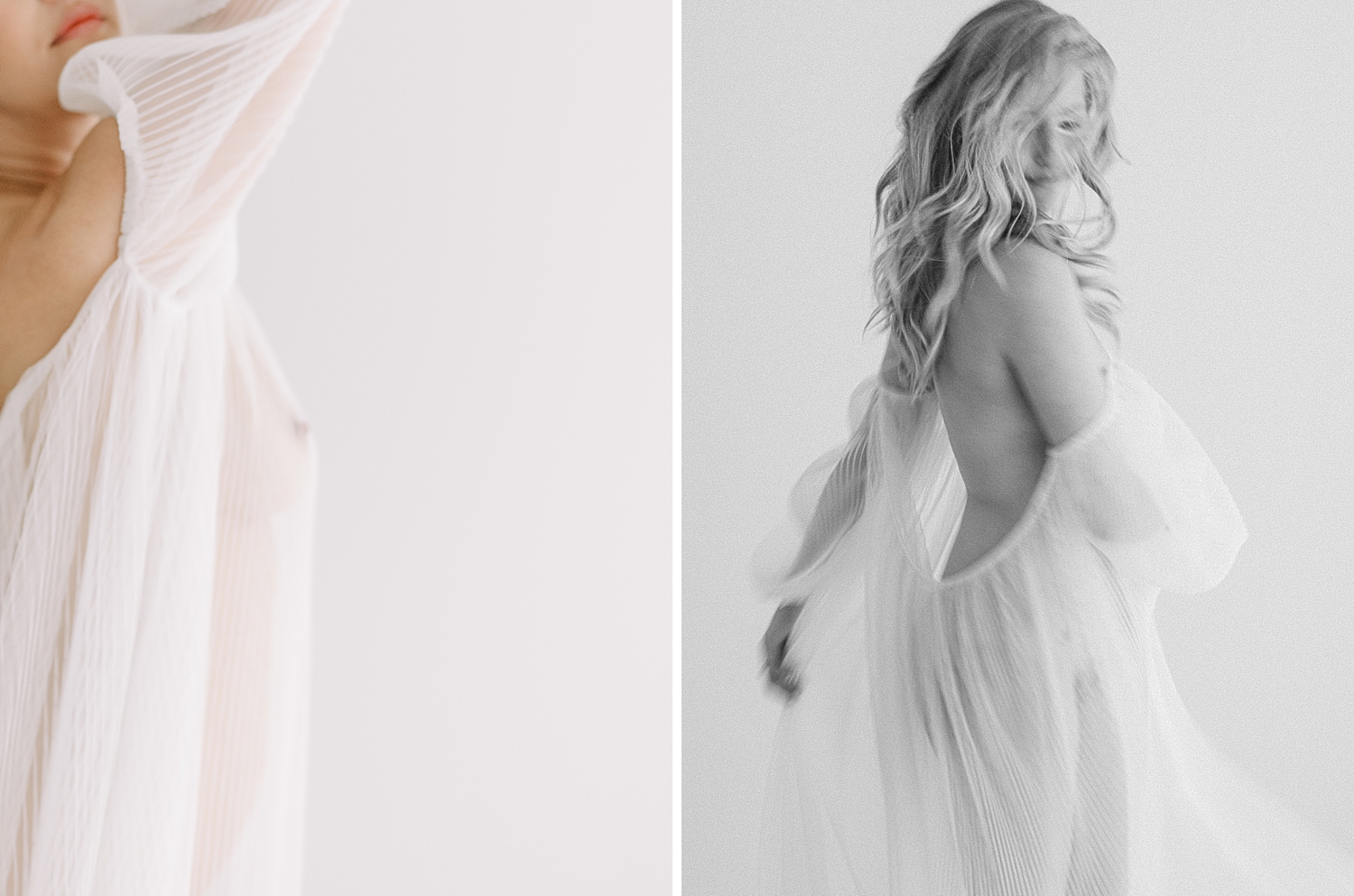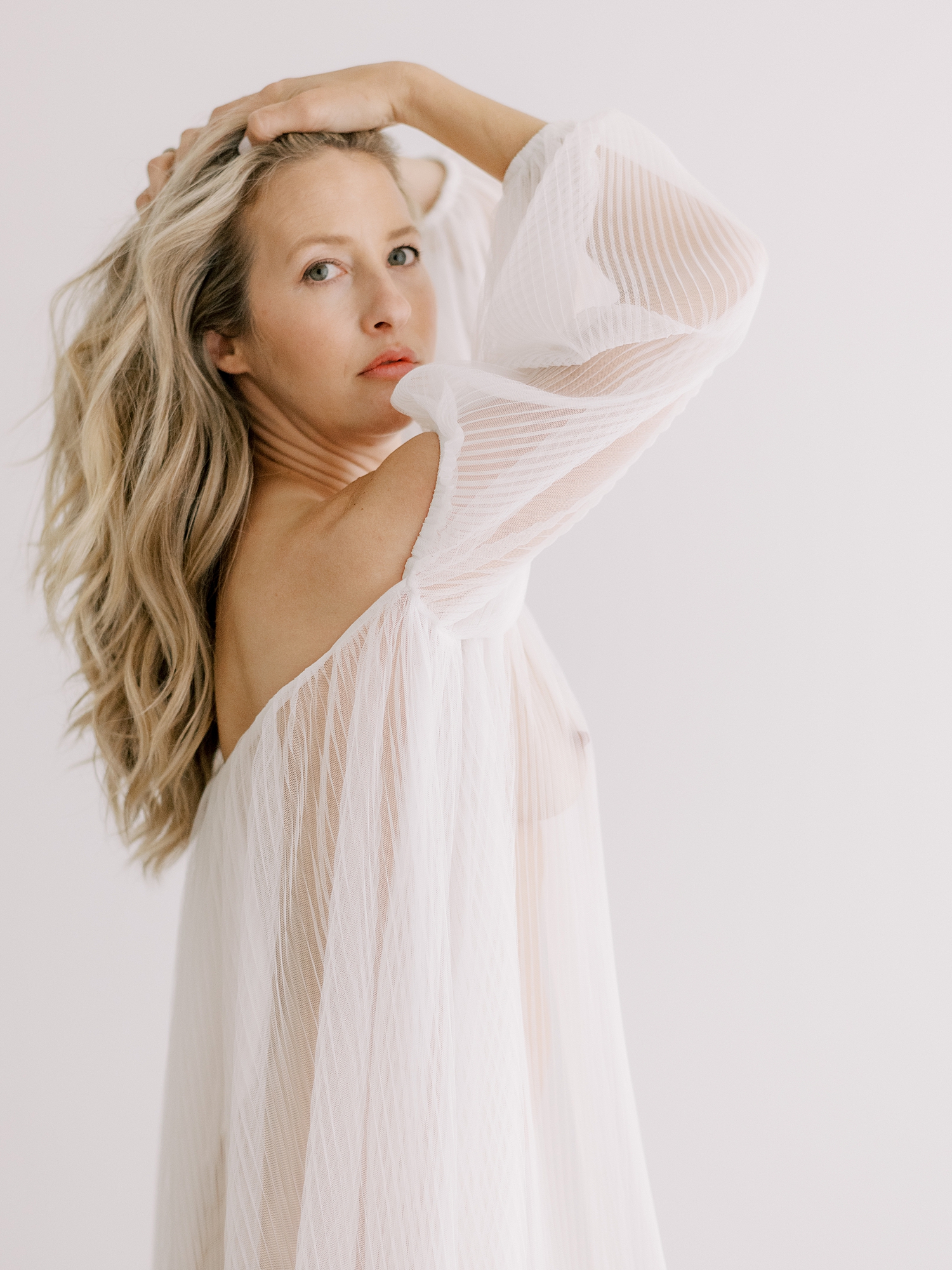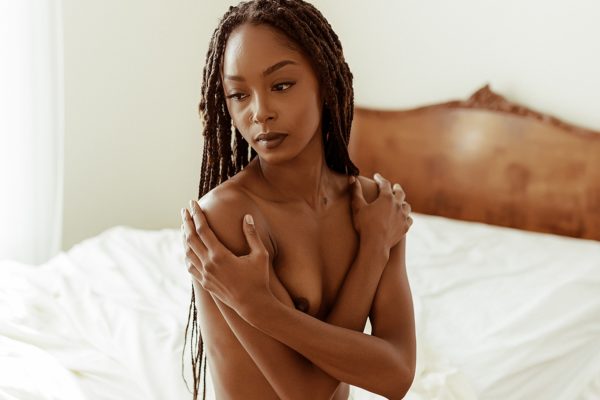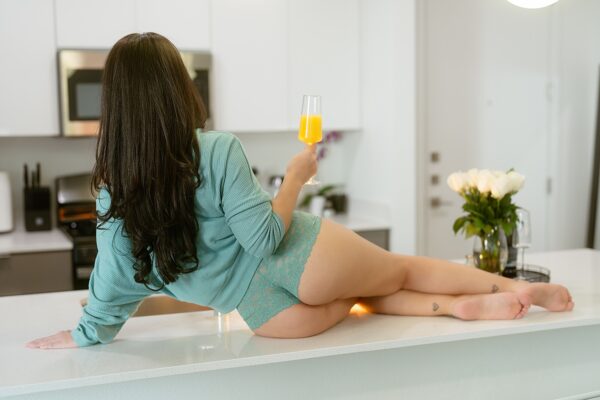There’s something timeless about Shannon Griffin’s boudoir work—quiet, delicate, yet undeniably powerful. She doesn’t just photograph bodies; she creates a space where vulnerability transforms into courage, where softness is just as captivating as strength. Her sessions invite women to slow down, breathe deeply, and step into a version of themselves that feels both seen and celebrated.
In this feature, Shannon shares her approach to creating an environment of trust and intimacy, how her own story informs the way she photographs others, and why boudoir is less about what’s revealed and more about what’s felt. Her words remind us that boudoir is not just a photoshoot—it’s a deeply personal act of art and self-discovery.
“Photographing the body isn’t about what’s revealed—it’s about what’s felt.” — Shannon Griffin
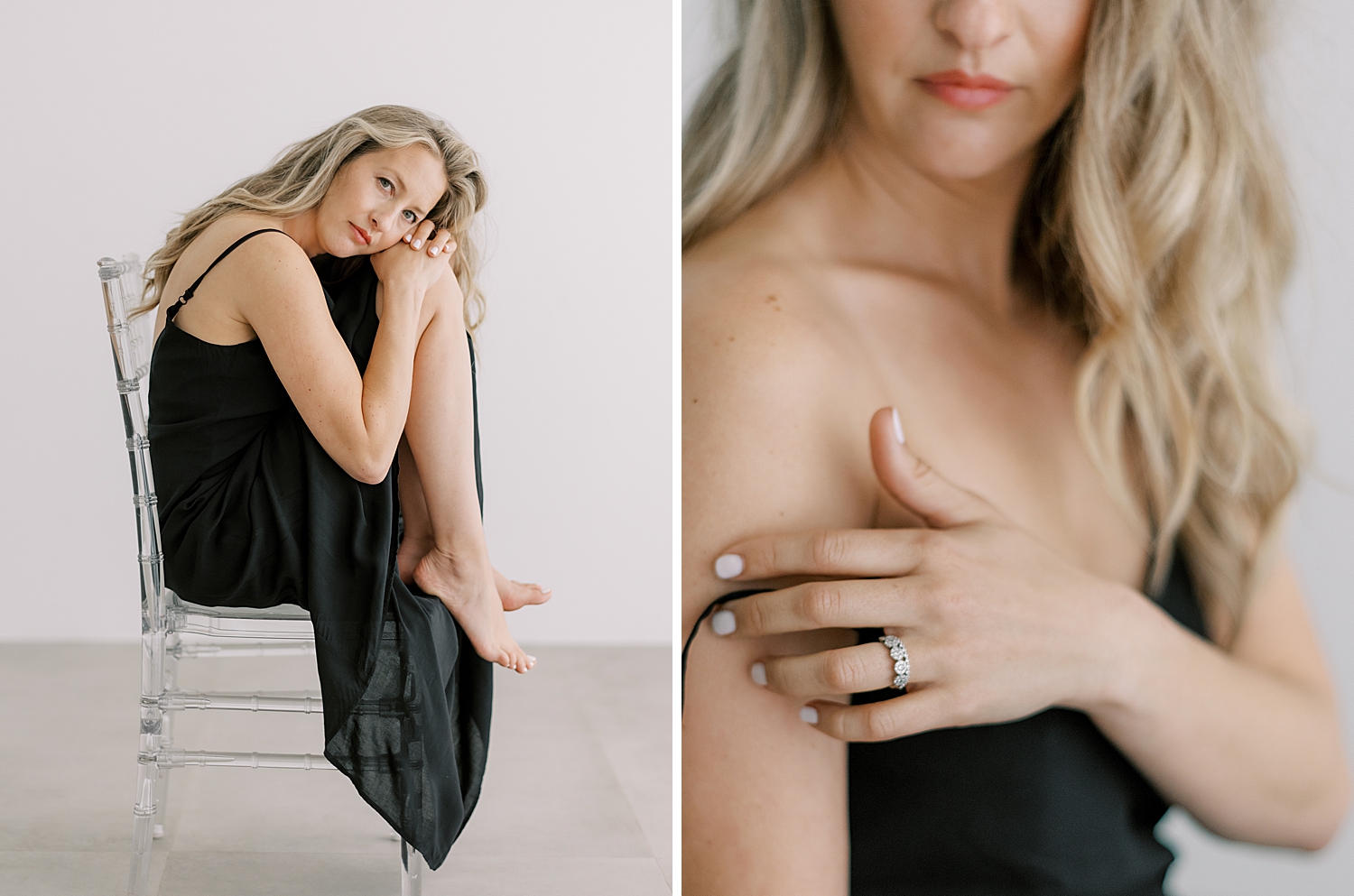
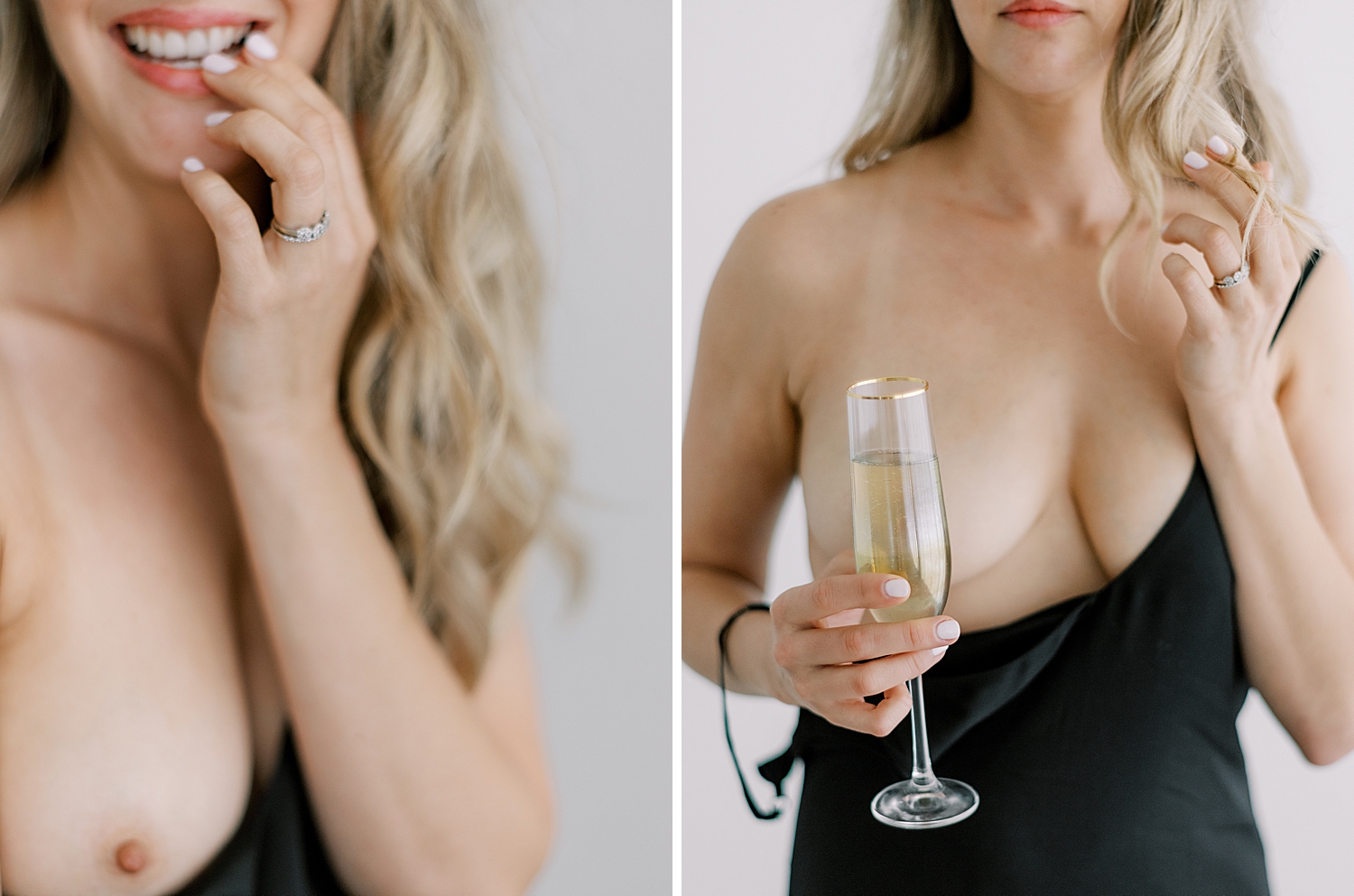
A Story of Vulnerability and Courage
When Shannon speaks about her work, she often reminds us that boudoir isn’t about what’s revealed — it’s about what’s felt. That truth unfolded beautifully in the session we’re featuring today.
Her client arrived carrying her own “why,” a deeply personal reason for stepping in front of the camera. Through Shannon’s process — the questionnaire, the conversations, and the space she so carefully creates — those reasons became art. “Turning her ‘why’ and story into tangible art was incredible,” Shannon shares. “It was so powerful to go through her inspiration photos and see why she had chosen them. Watching it all come to life was a reminder of how personal this work truly is.”
The images are delicate yet bold: soft light across bare shoulders, a sheer gown that blurs the line between hidden and seen, moments of stillness that feel almost sacred. They tell the story of a woman willing to stand in her own truth, to face herself with honesty and grace.
As Shannon reflects, the session wasn’t just about photographs. It was about the experience of being present, of giving herself permission to “just be.” That vulnerability, met with courage, is what transforms boudoir into something unforgettable — a piece of fine art that is as much about the soul as it is about the body.
“It wasn’t about posing perfectly. It was about allowing myself to be seen.”
You describe your work as an invitation to just be. What does that mean to you when you’re working with someone who may have never been photographed this intimately before?
Most of the women I work with have never been photographed in this way. The intimacy goes far beyond the photograph. It starts with vulnerability and connection in our conversations and planning. We talk about things she may have never thought about or shared before. I provide a safe space where there is zero judgment and full permission to just be. I would never expect someone to be comfortable with me showing up to their session without putting in the work beforehand to truly get to know them.
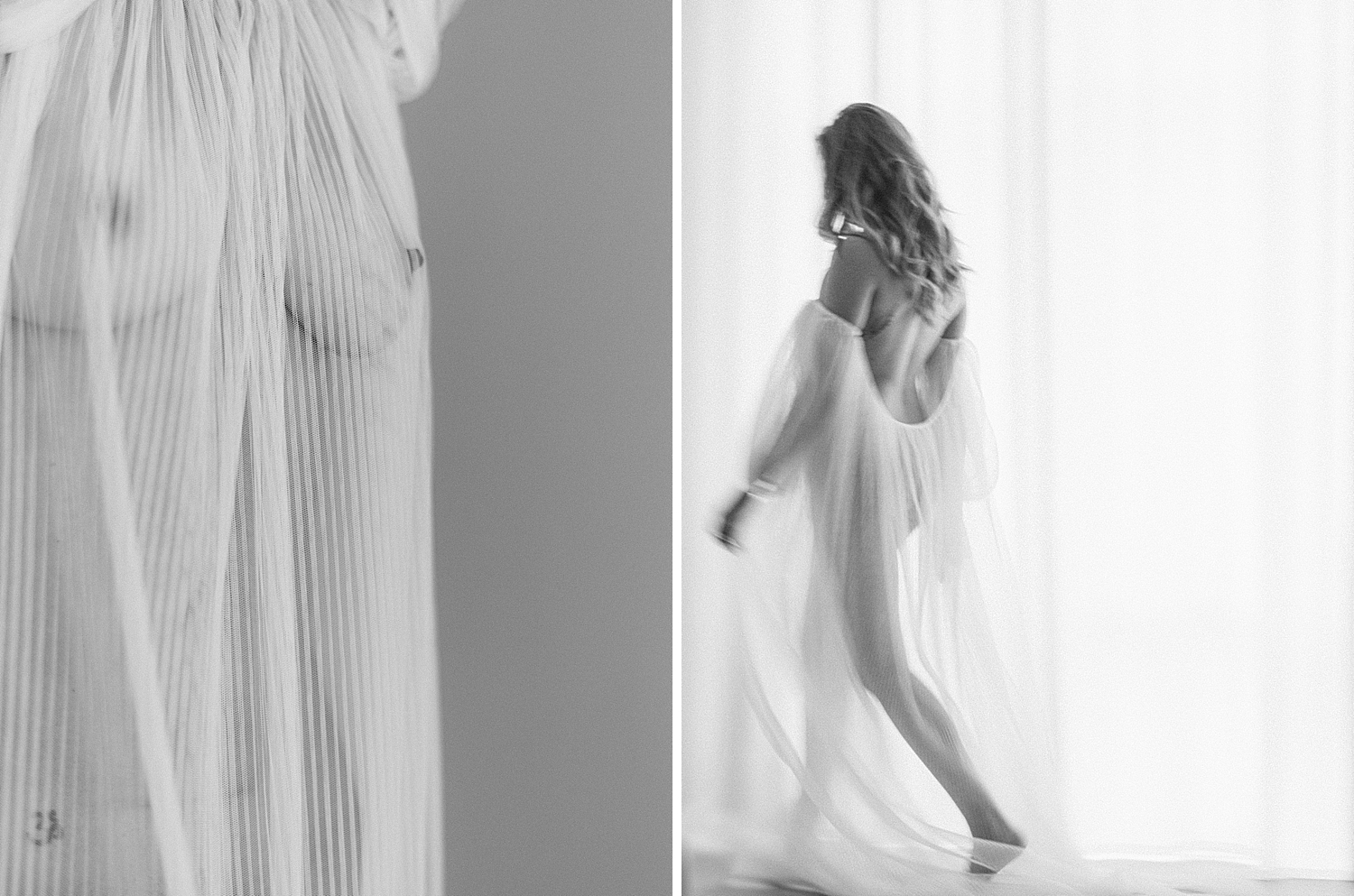
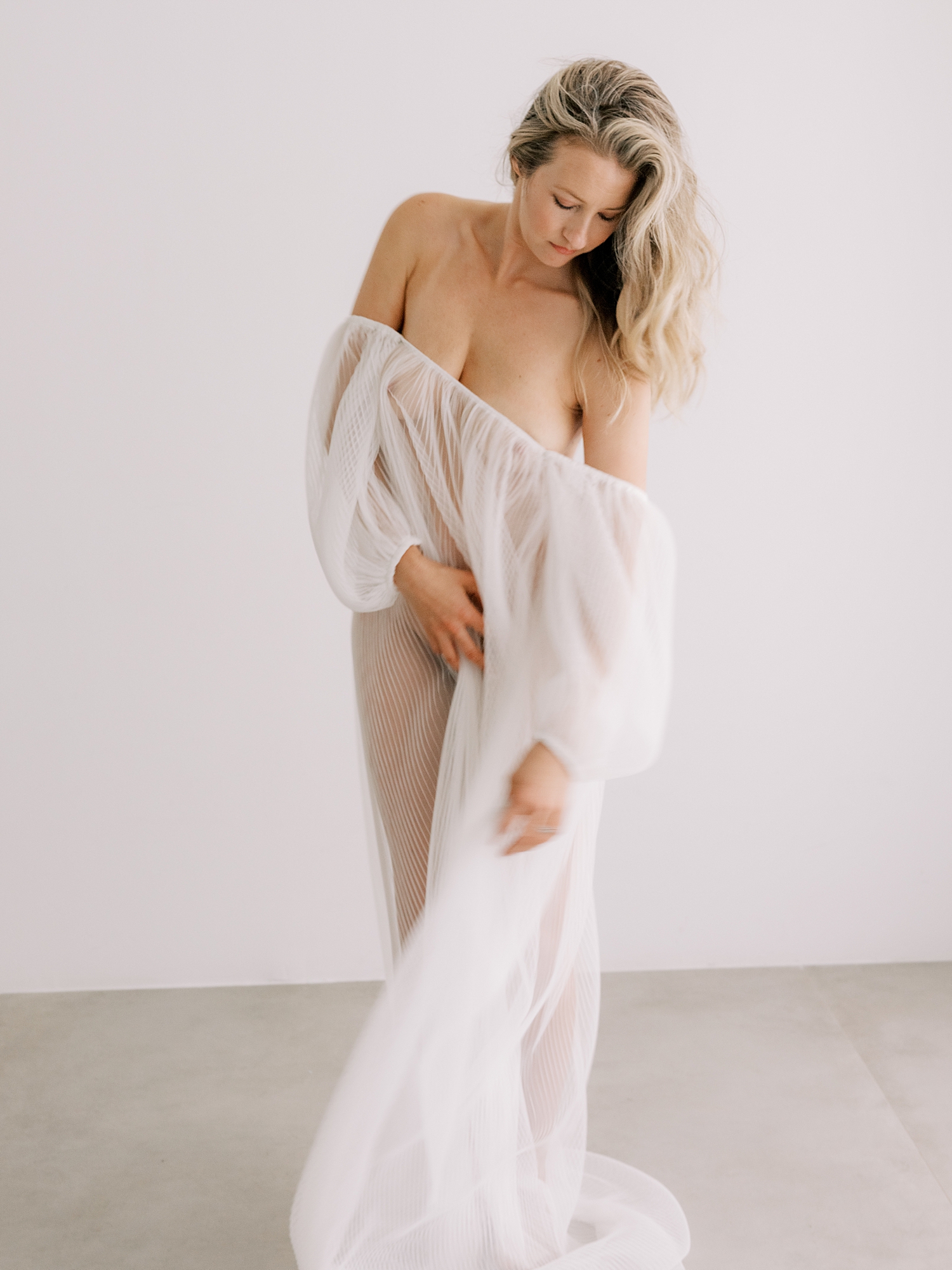
There’s such a gentle honesty to your images. How do you create space for vulnerability during a session?
I take clients through my process from the very first inquiry all the way to their session. I have a “red flag” question in my inquiry form that shows if we will be a good fit for each other. That’s the first place we begin building trust and connection. Then, I send a process page that lays out what it will be like to create art with me. If it feels aligned with the experience they’re looking for, they’ll fill out my questionnaire and schedule a discovery call. This all happens before they even decide to book. It’s such a personal experience, and I want them to know that I’ll be by their side the entire time.
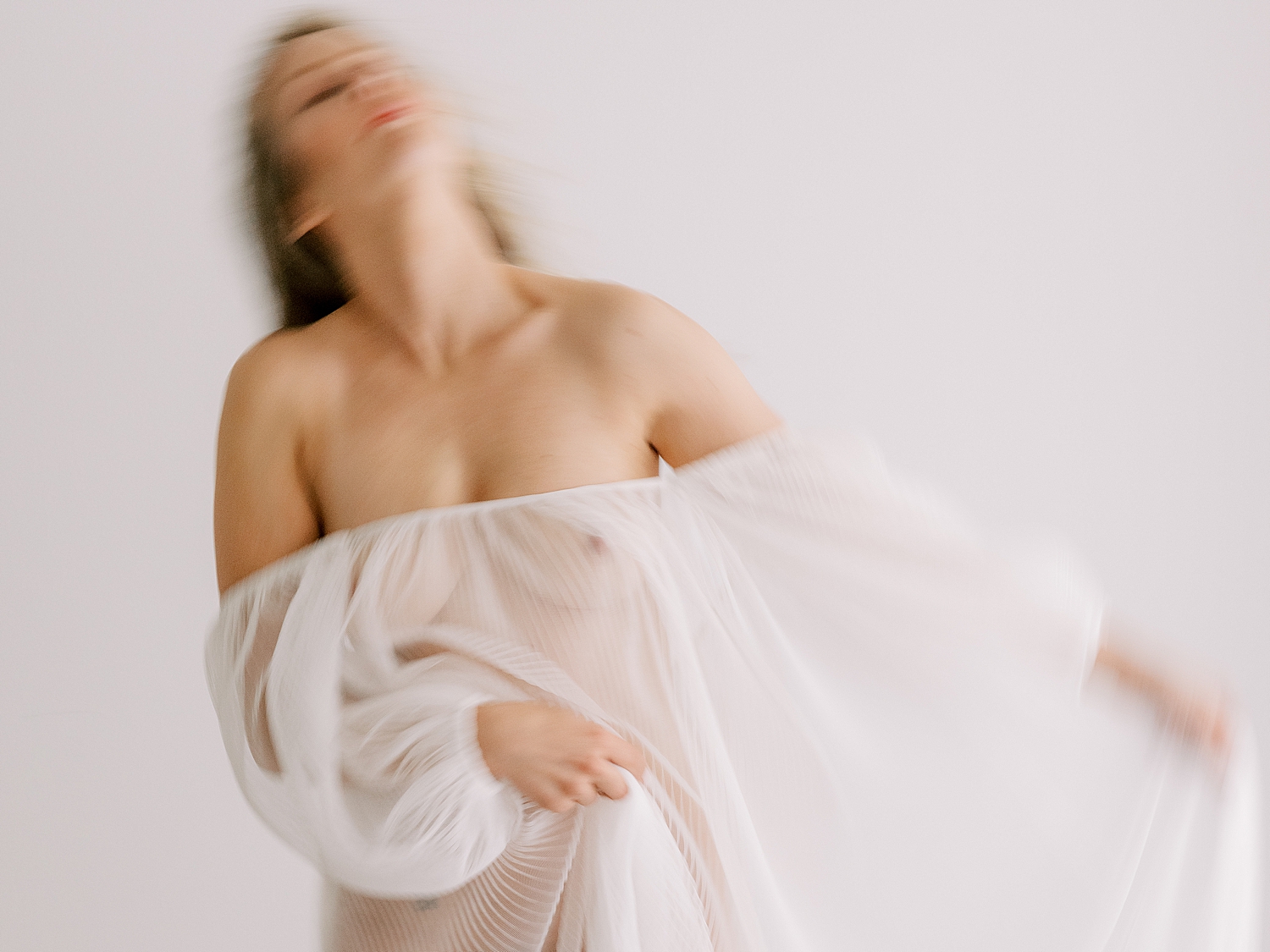
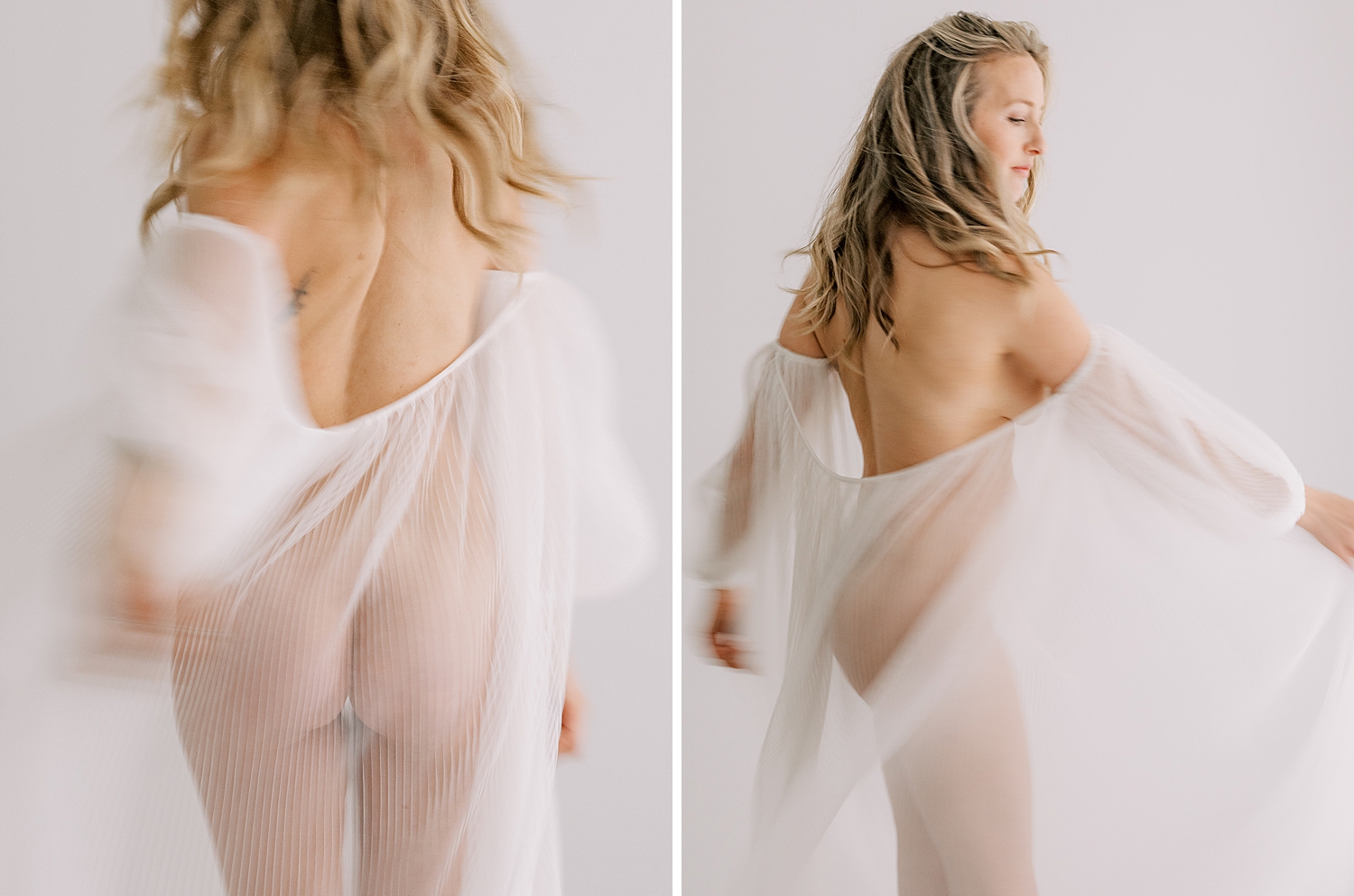
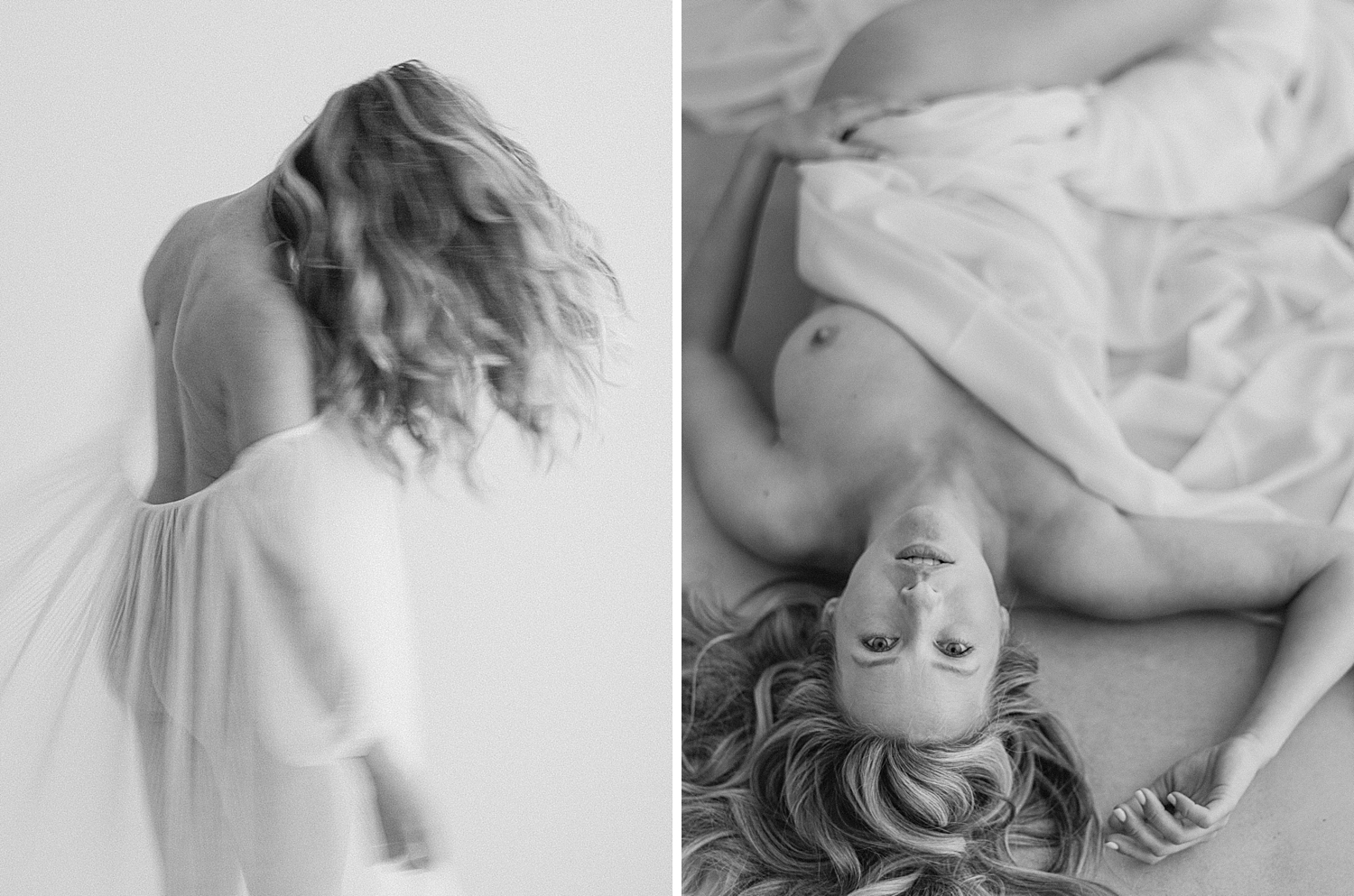
You’ve said, “Photographing the body isn’t about what’s revealed—it’s about what’s felt.” Can you expand on that?
Almost always, at the end of a session, my clients say, “I don’t even care how the photos turned out. I feel so amazing from this experience, and this is exactly what I needed.” It’s 100% about the experience. They don’t even need to see the photographs, because they’ve already stood in their vulnerability and faced parts of themselves worth exploring. There is so much bravery in that. It’s palpable when photographing them.
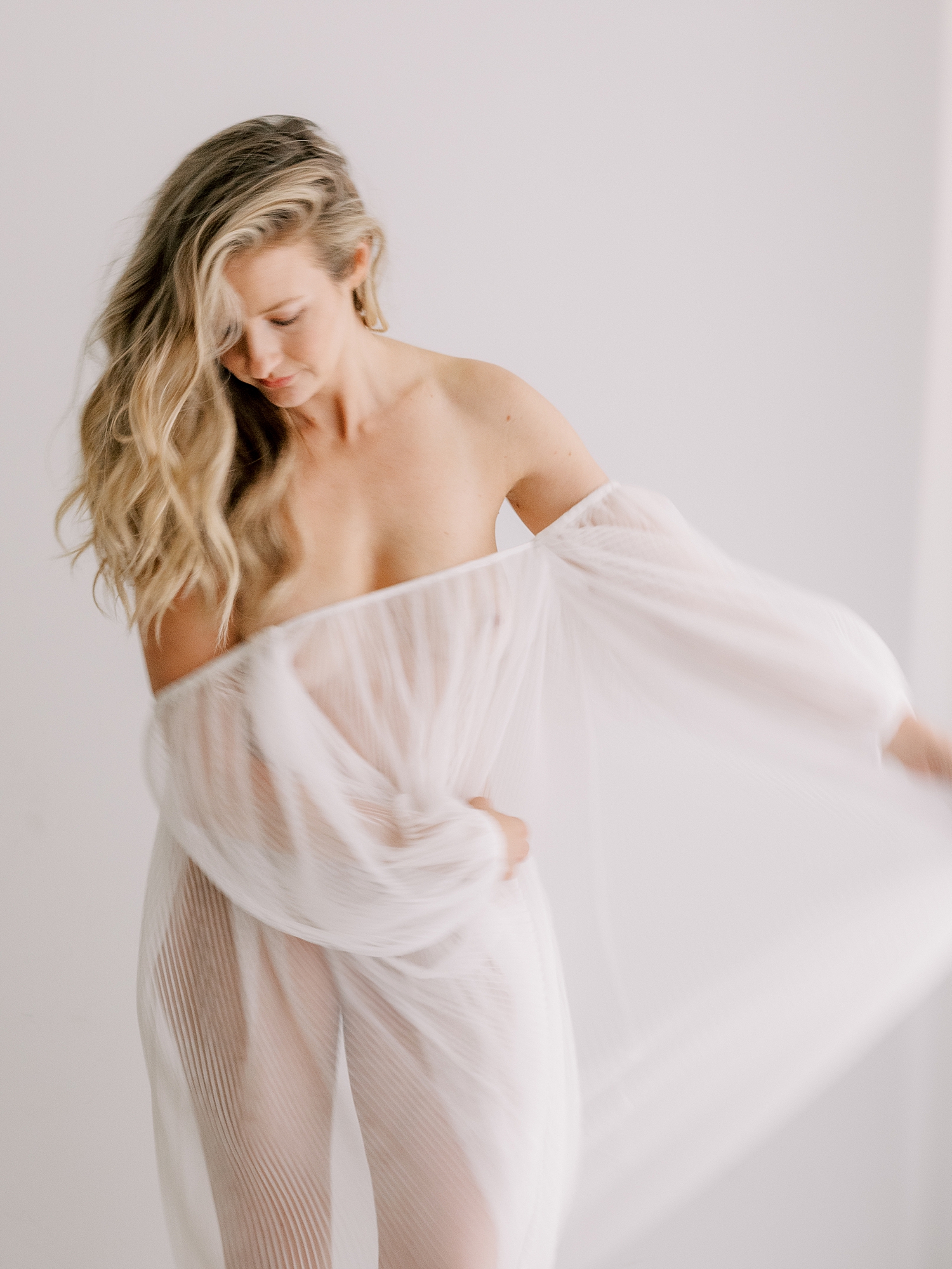

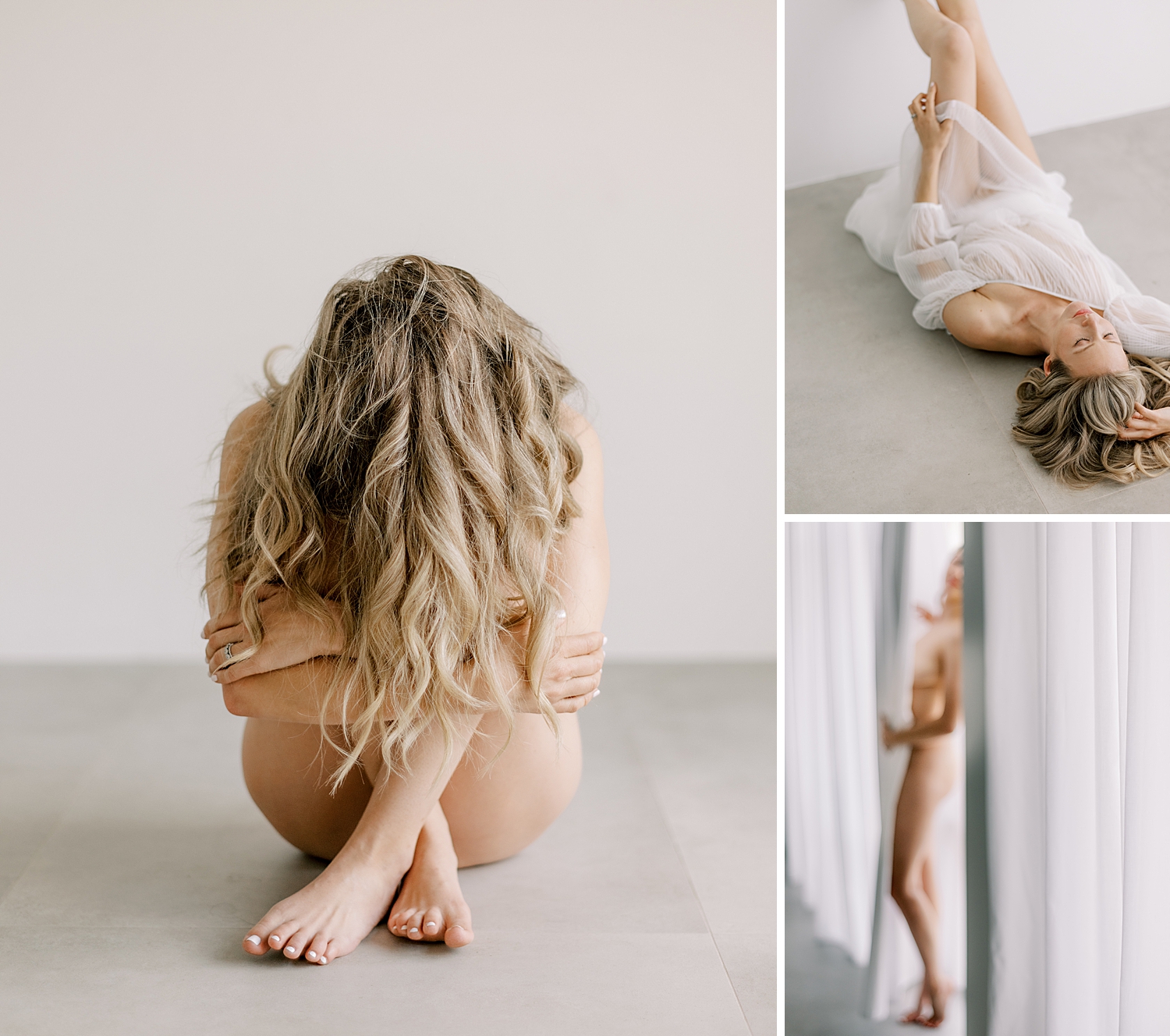
How has your relationship with your own body or femininity shaped the way you photograph others?
I was in a place in my life, for so many years, where I didn’t feel “seen.” I wondered if it was all my fault.
“Am I not pretty enough? Smart enough? Did I gain weight? Should I have makeup on when he comes home? What am I doing wrong?”
I felt lost, lonely, and hopeless. I used to be confident and strong and know who I was. I’d always been independent, and then suddenly I realized I was in a co-dependent relationship. I felt like an empty shell, grasping for straws. I truly believe some people get married who shouldn’t. It doesn’t mean they’re bad people, just not right for each other. I had to learn this the hard way.
I fell in love with boudoir at my darkest. I felt invisible, and I realized so many other women felt this way too. This was my chance to give back—to help another woman feel seen. I’ve photographed women who are single, divorced, mothers, child-free, survivors of abuse—you name it, she’s stood in front of my camera. Helping them tell their stories, in return, has helped me tell my own.
There’s always something pulling us toward an experience like this. Personally, I relate to the search for confidence, as I’m 42 and have a 3-year-old. I’m constantly redefining what beauty looks like and working on being kinder to myself. I want my daughter to grow up seeing a mother who loves herself and learns to do the same.
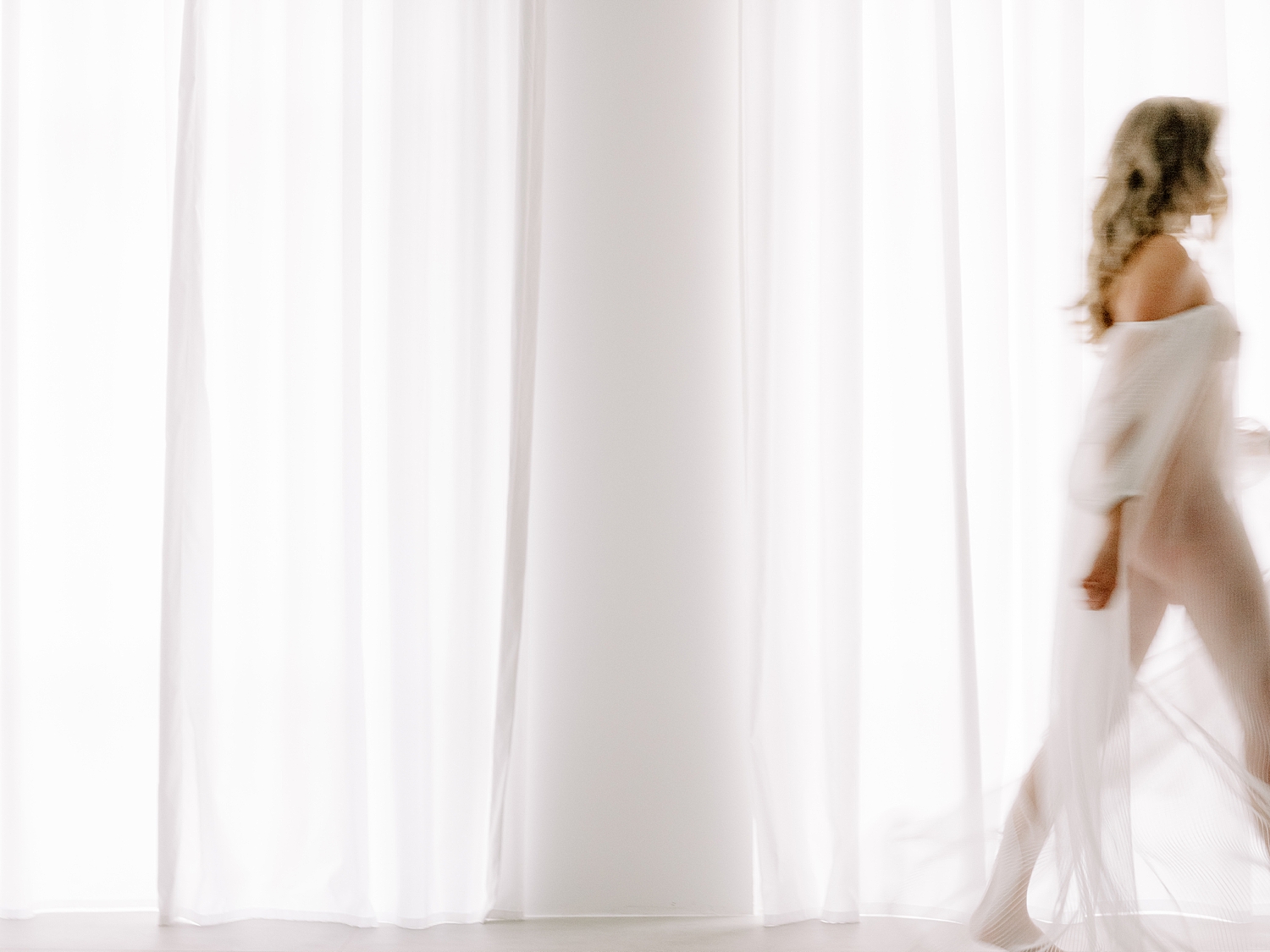
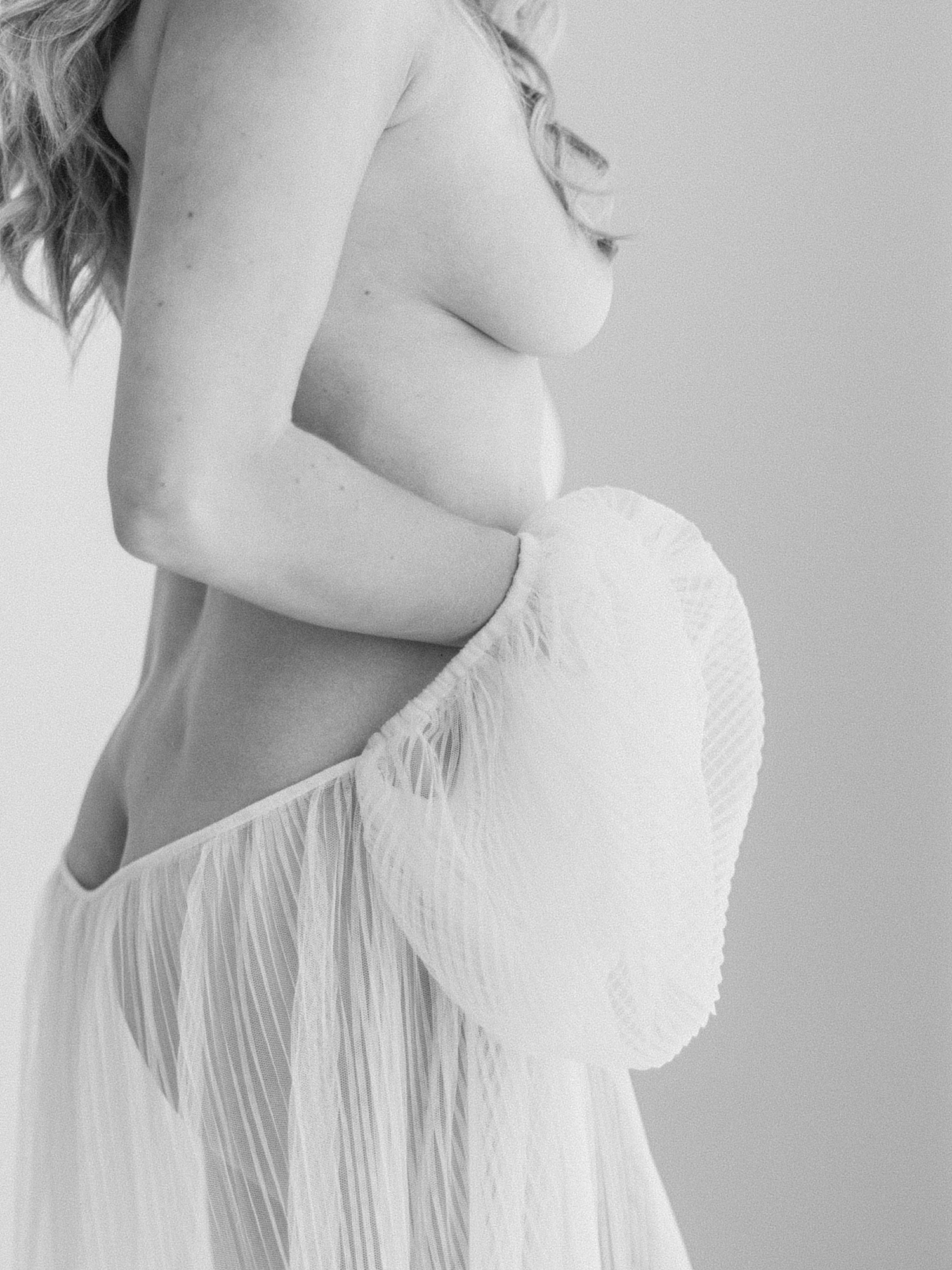
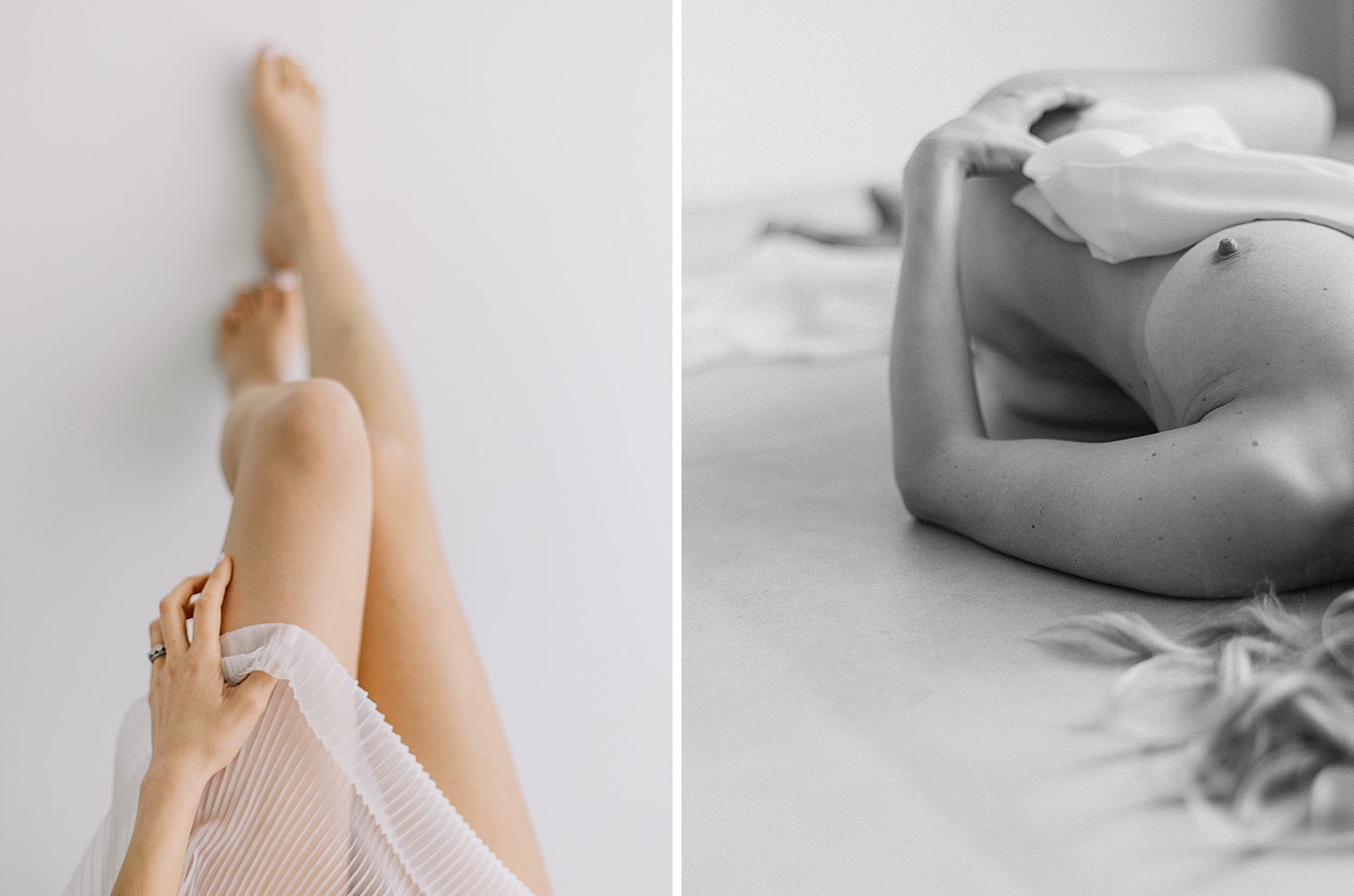
What draws you to natural light and texture—the softness of a curtain, a shadow, a body in stillness?
My goal is to photograph the world the way my client sees it. I want to highlight parts of her that are uniquely hers. There’s so much beauty in the “everyday,” and it’s my job to reveal that.
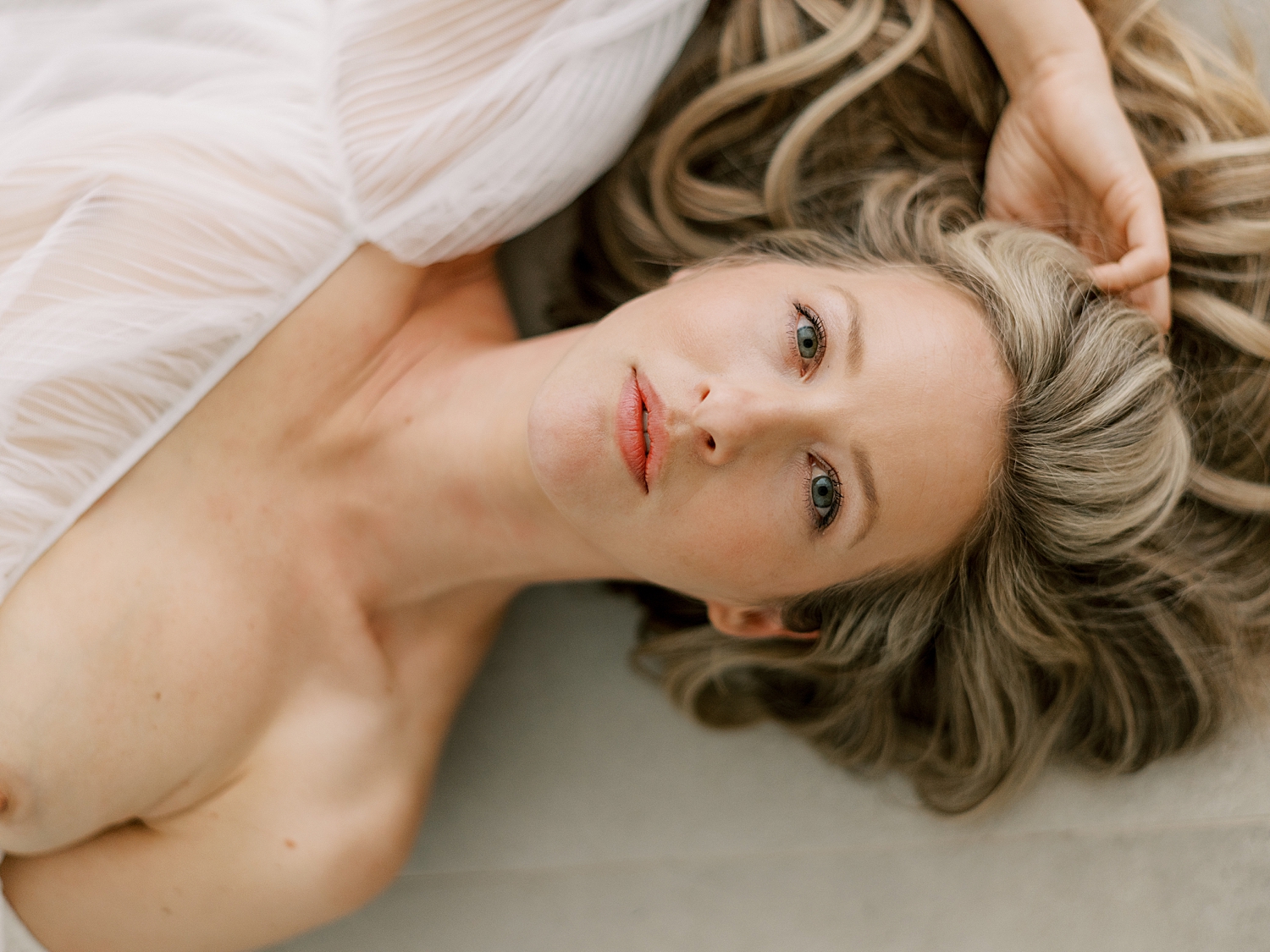
What do you want your clients to walk away with—not just in photos, but in how they see themselves?
My goal is to merge the women I photograph with the fine art they would hang in their homes.
Most of my clients are art collectors, yet many experience a disconnect. They’re moved by a photograph of a nude stranger, but the idea of the woman in that image being them feels uncomfortable.
Why? Because vulnerability is uncomfortable and hard.
It’s not surprising that some who inquire with me don’t move forward, because they aren’t ready to go that deep. They aren’t ready to face themselves head-on and ask the hard questions. Sometimes we sit in silence during planning while they process.
The process is never rushed. It unfolds slowly and organically.
The journey I guide women through is about getting to the other side of vulnerability—and ending in courage. It’s about being able to display a large piece of art on their walls, of themselves, and to know: “I did that. I stood in my truth.”
Let’s bridge the gap and collect art of ourselves.
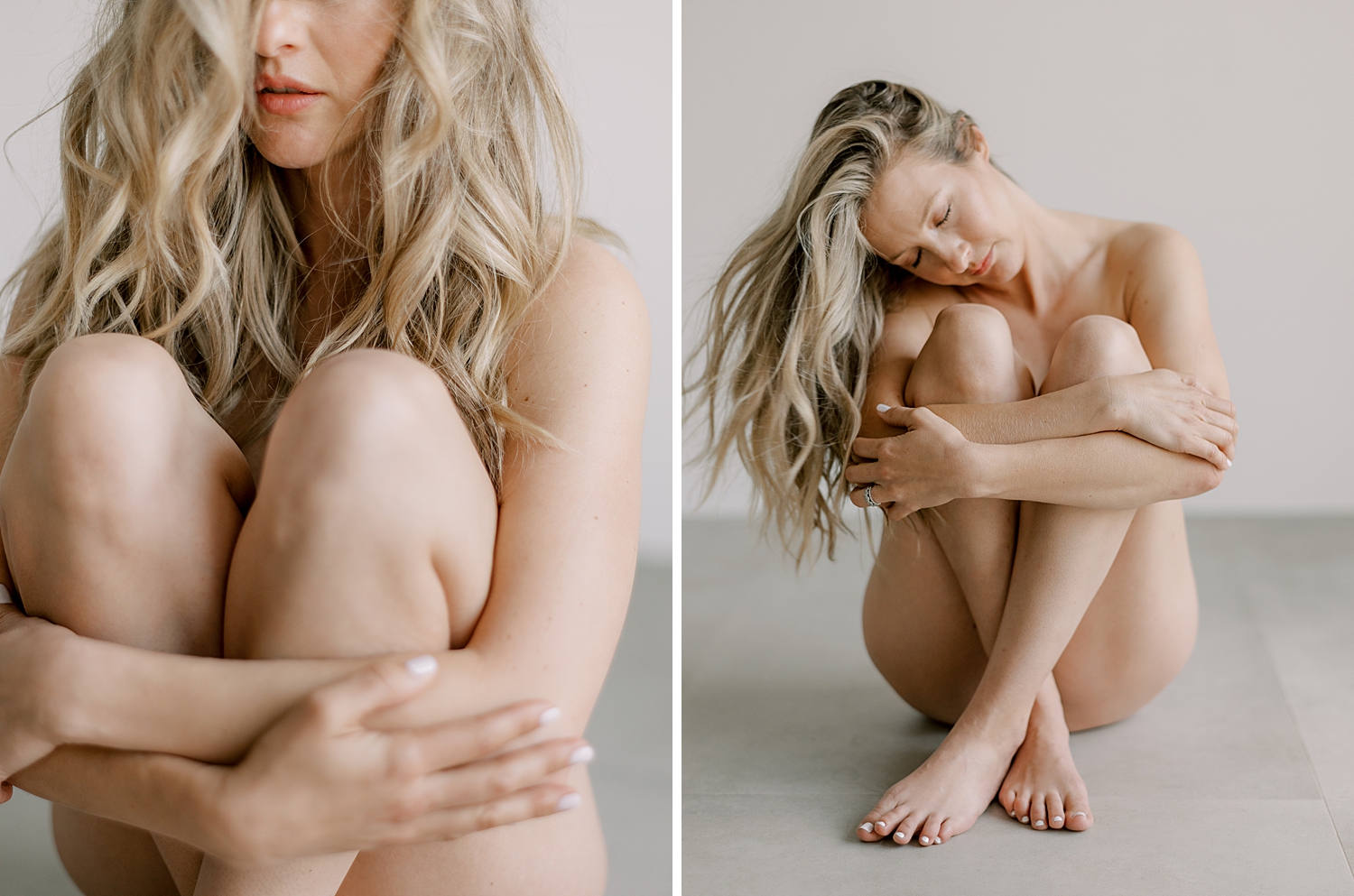
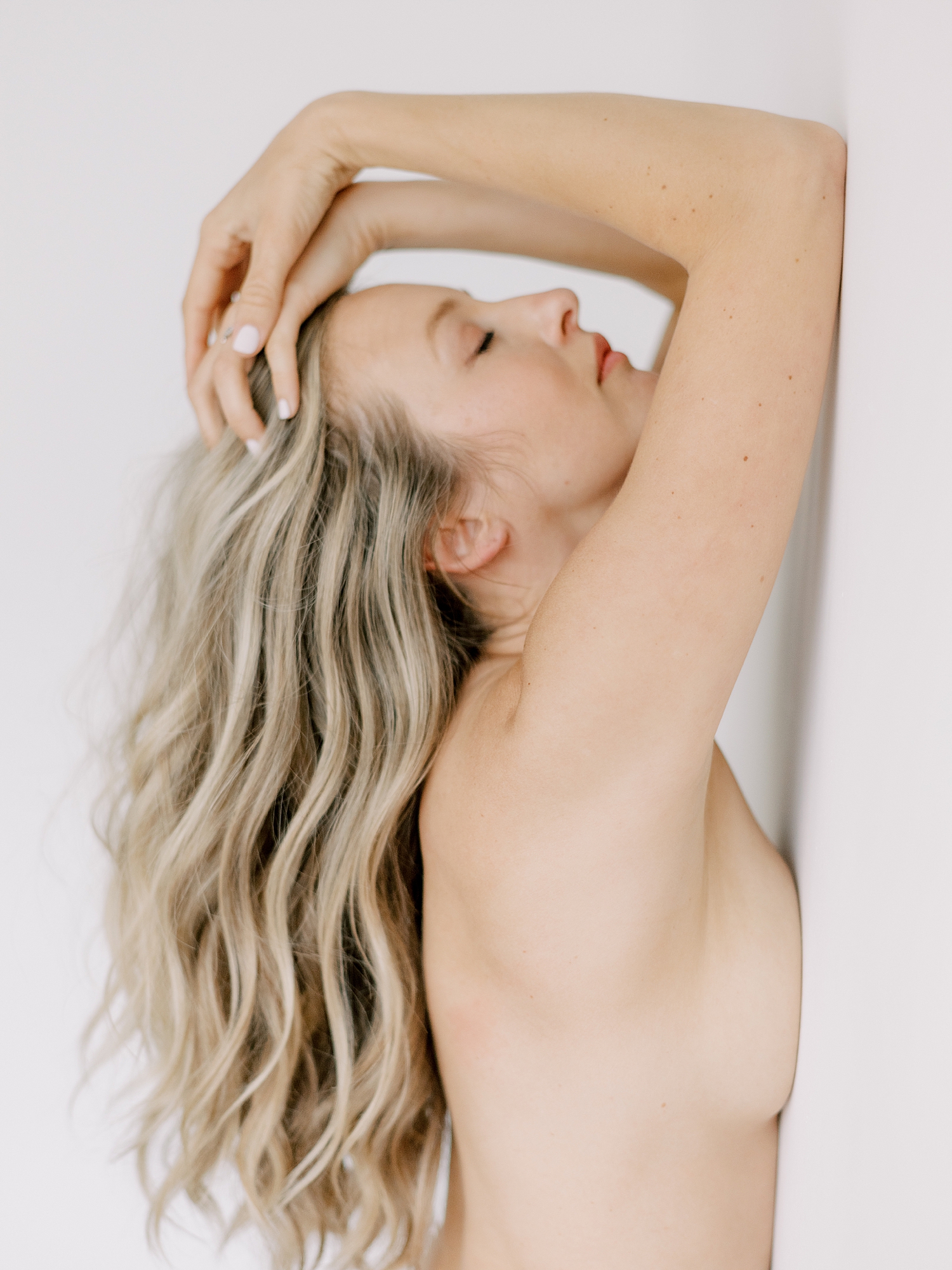
Looking back at the session we’re featuring, what do you remember most about creating those images?
Turning her “why” and story into tangible art. It was so powerful to go through her inspiration photos and see why she chose them, based on her answers in my questionnaire. Watching it all come to life was incredible.
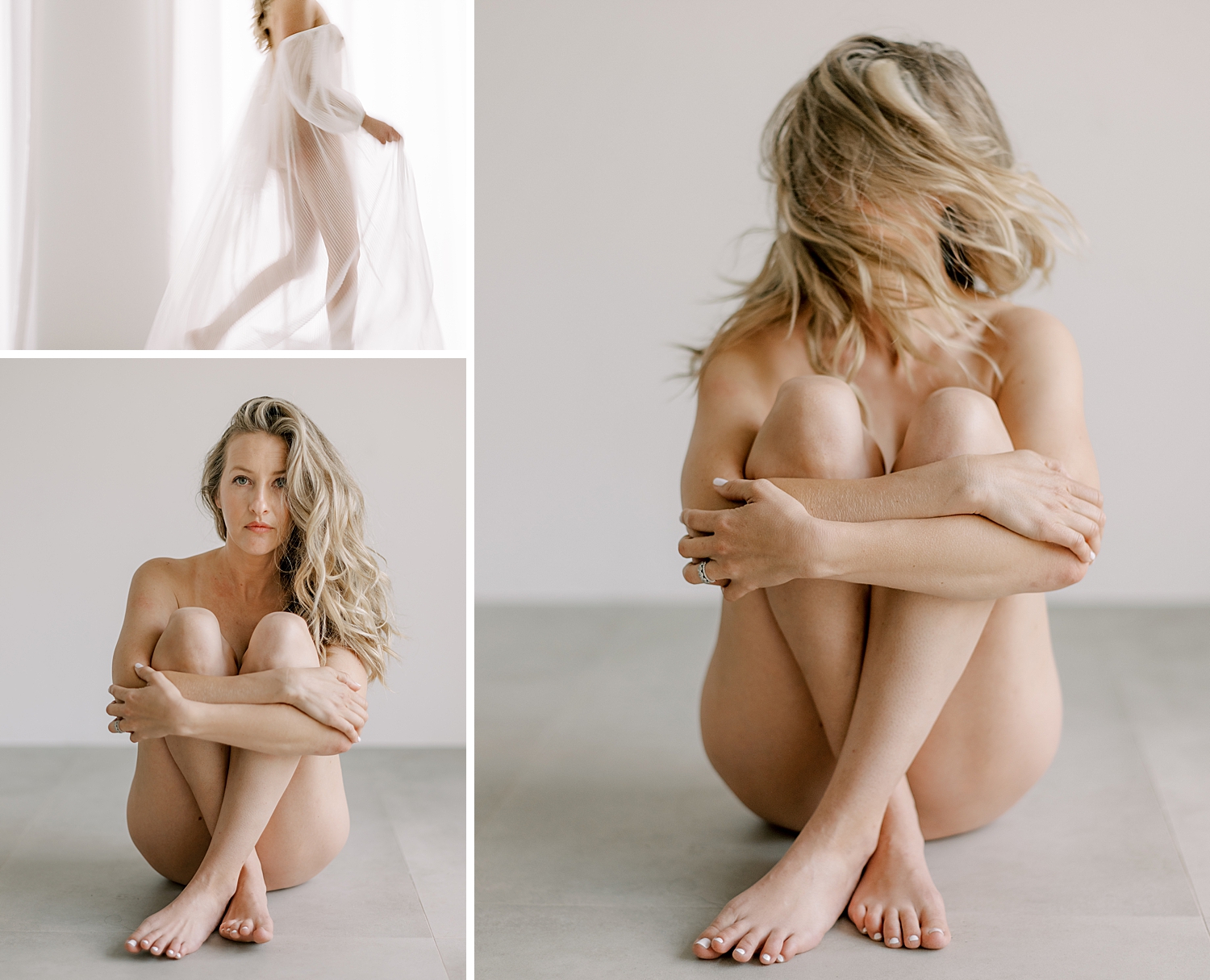
What advice would you give to someone who’s curious about doing a boudoir session but feels nervous or unworthy?
Do it anyway. Something is pulling you to this experience, so listen to that. Find someone whose work inspires you, makes you think, and makes you feel.
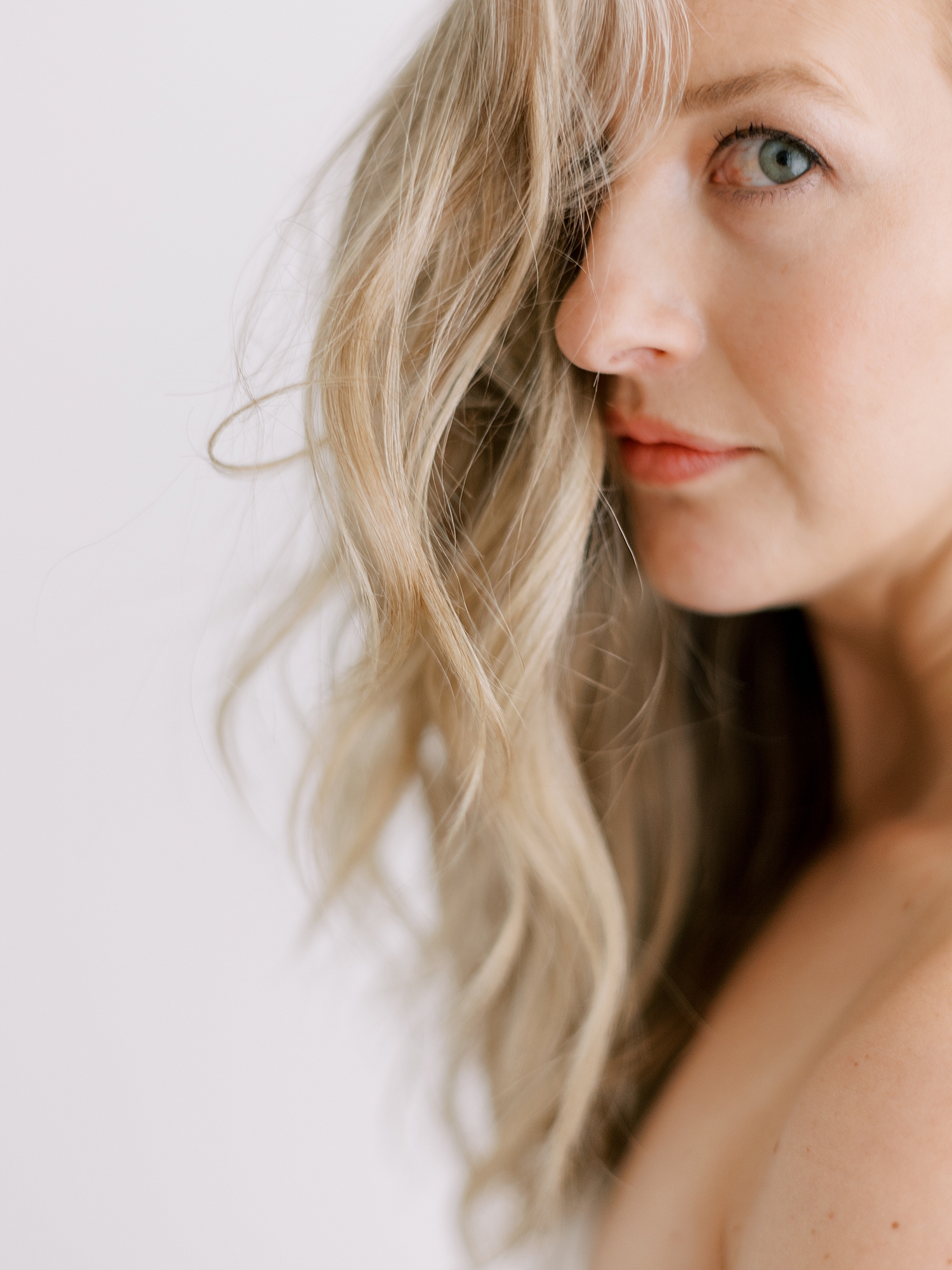
How has boudoir photography changed you?
It’s my therapy. Even though I often become the therapist for these women, there’s something so beautiful in that exchange. They allow me to explore parts of myself and learn something new. Every woman I photograph teaches me something about myself. It’s a truly beautiful cycle.
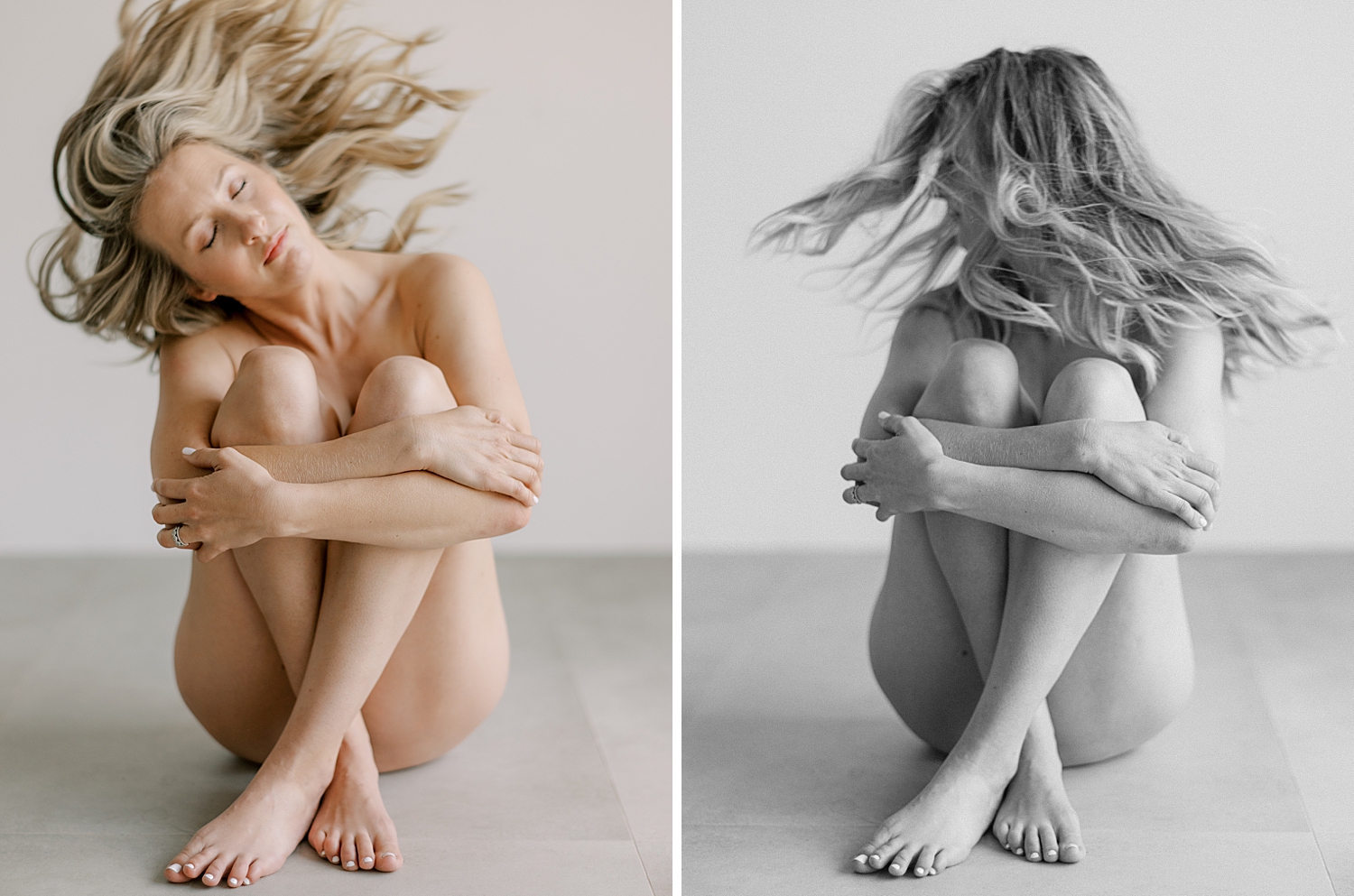
Last one—describe your work in three words.
Slow. Honest. Emotive.
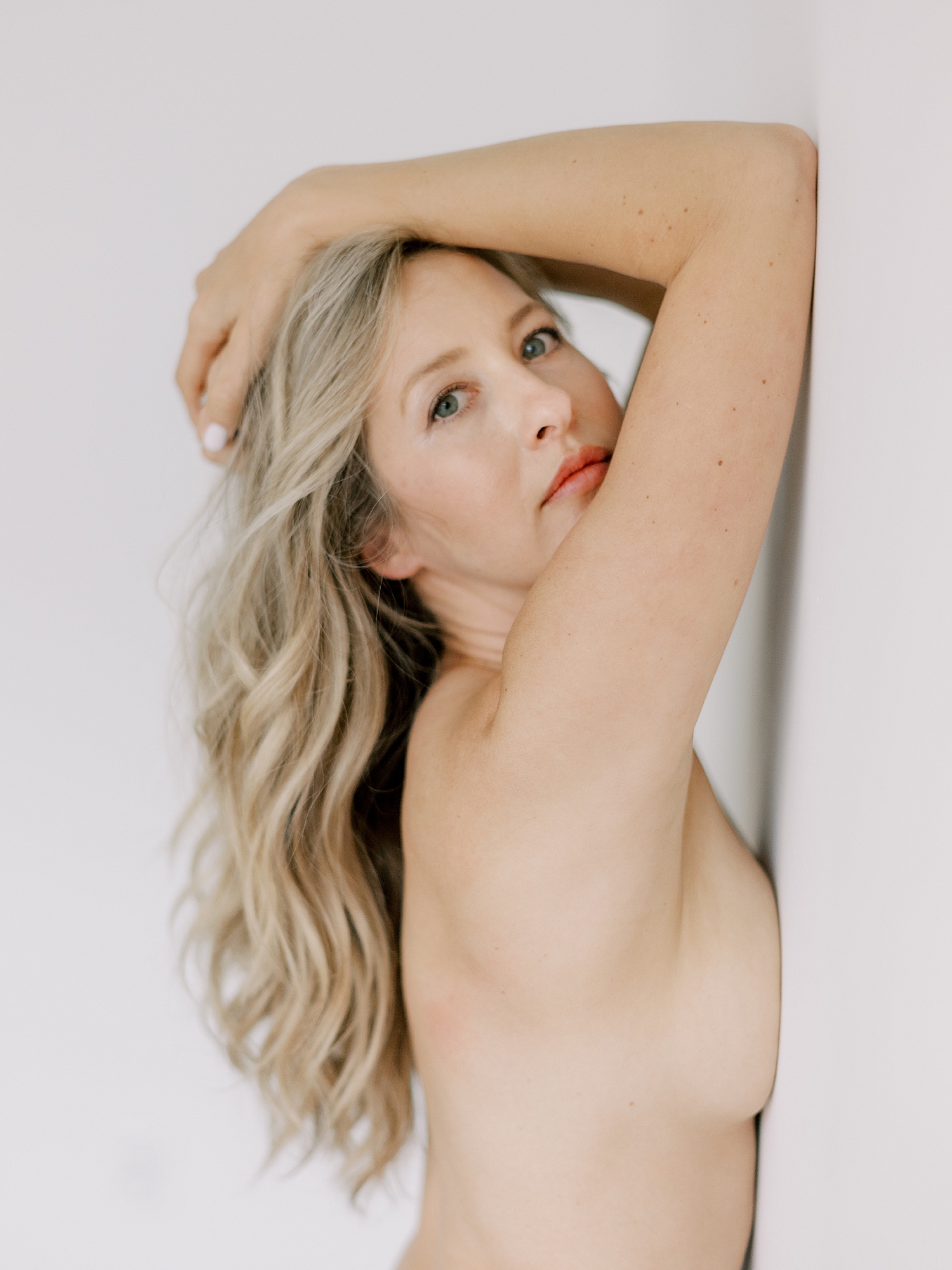
Photographer: Shannon Griffin
Instagram: @shannongriffin

